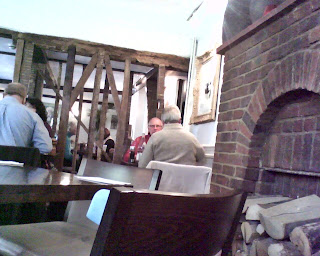but to answer the question What is so important about this food?
Well, it is obviously Fish & Chips. Everyone knows that one. Duh.
My mum said that it is Britain's National Dish. That's true, but wasn't the answer I was looking for. The answer I wanted was that this year, 2010, is the 150th anniversary of the dish.
So we know now that Fish & Chips was first served in 1860. But where? Ah, thereby hangs a tale.
The earliest record of fried fish is thought to be in Charles Dickens' Oliver Twist, published in 1837, where he referred to a "fried fish warehouse".
In the 1850s, street traders sold pieces of fried fish with cooked potato shavings wrapped in newspapers on the streets of London.
Yet both Lancashire and London lay claim to the invention of the classic takeaway dish - chips were the staple fare of the industrial north whilst fried fish was introduced in London's East End.
Southerners claim that the first fish and chip shop was set up by a Jewish immigrant, Joseph Malin, in about 1860 in east London.
Northerners insist that the first chippy opened for business in Mossely, Lancashire in 1863, set up by a Mr Lees.
Nowadays the UK boasts around 11,500 fish and chip shops.
It comes with a variety of different accompaniments aside from the usual salt, vinegar and ketchup - for starters, there's a favourite of mine, mushy peas...
Then there's pickled eggs....
...curry sauce...
...gravy...
..and even a bottle of stout.
Now then... what's the new food item?
 |
| Name This Food! |











































